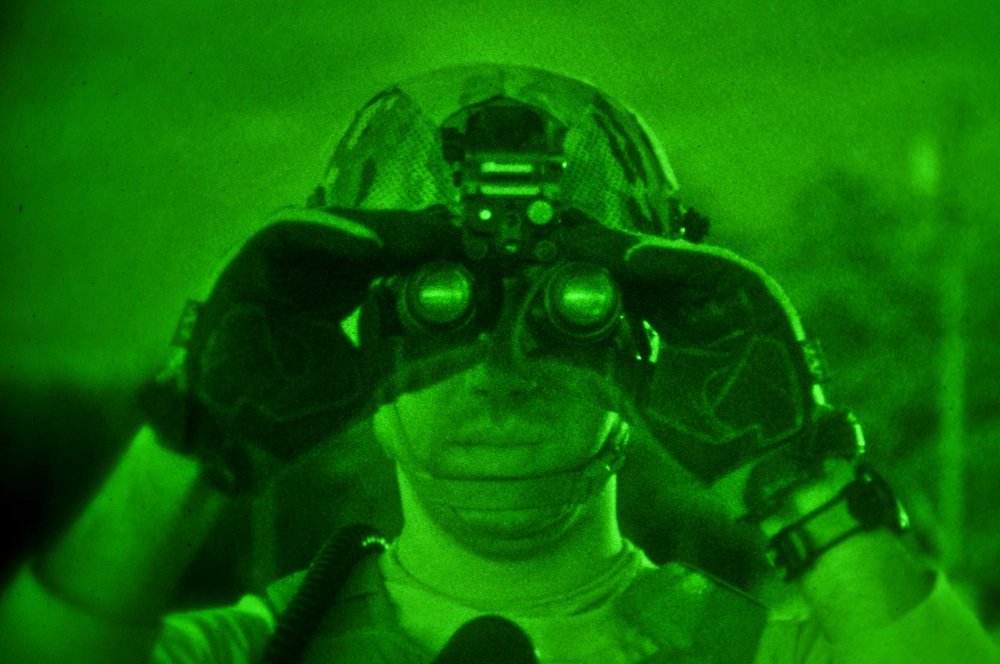When you think of night vision technology, you probably imagine something stolen from aliens that enables the pitch black of the night to be illuminated in a green sea to enhance visibility. First incepted in the 1930s, night vision technology has been used in several devices, all designed to enhance viewing in utterly dark or low-light environments.
This technology has partly been a replication of how animals see in the dark. While animal eyes are incorporated into their head sockets, modern night vision devices use goggles as a binocular scope mounted onto a head strap or helmet. Until contact lenses with NVG technology become available, this will have to do.

Modern night vision
The standard technology implemented by modern night vision goggles utilize image enhancement, a technology similar to old TV screens and computer monitors. Even in the darkest of nights, specks of light are present, most of which are infrared that people can’t ordinarily see. Night vision goggles use image enhancement technology to concentrate all available light and magnify for clarity in the dark.
Image amplification passes photons gathered in low-light through a vacuum tube, which changes them to electrons and eventually lights up in a phosphor-coated screen that enhances the viewer’s perception. The green color is lit to provide a brighter lens image, mainly because it’s the easiest to see for prolonged periods.
Another technology used to view in the dark is a unique lens that focuses the infrared energy emitted by all objects in view. A concentrated array from an infrared-sensor component scans the focused image to create an image with a temperature signature called a thermogram.
Based on the amount of heat emitted by the object, the night vision goggles create a heat signature translated into electric impulses. The sensor components then send information to the display, which appears in various colors depending on the emission’s intensity.

Animal night vision
Nocturnal animals have adapted through the ages to enhance their sight in the dark. Aside from complementary senses like heightened hearing and smell, keen eyesight is an indispensable capability animals use to get around at night.
Several animals have an added tapetum layer behind their retinas that reflects light coming from the retina back to the retina once again. This second reflection gives the retinal cells a second chance to magnify the reflected image.
Typically, a human eye has rod and cone cells. While cone cells sense color in bright, focused light, rods are meant to catch incredibly dim and scattered light. Nocturnal animals have more rod cells in their eyes, which enhances their vision eight times that of humans.
At the same time, you would find the eyes of nocturnal animals incredibly colossal. Owls, for instance, have eyeballs occupying almost half their skulls. This adaptation, however, comes with a limitation to move their eyes within sockets. Rather than revolving the eyeballs as humans would do, nocturnal animals have to rotate their heads up to 180 to 270 degrees to ‘lock on’ to their prey.
Similarities
Modern technology still has a long way to replicate animal night vision in human application. This technology promises a complete overhaul in the military application and is also intended for everyday medical use.
Each subsequent enhancement of modern night vision produces better images at lower costs and in high resolution. Weighing in at around two pounds and still dependent on a battery to keep them powered, modern night vision goggles replicate image enhancement in a way similar to how nocturnal animals see.


